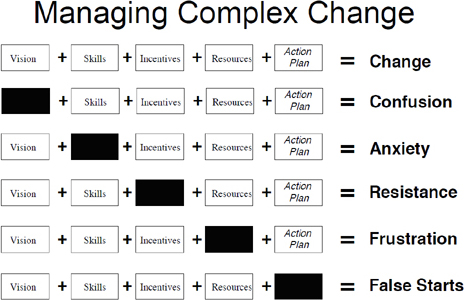Leggendo questa recensione “sul campo” di Sharepoint 2010, che prova a misurarne le funzionalità rispetto al famoso modello SLATES proposto nel 2006 da A. McAfee mi viene in mente l’immagine della professoressa che corregge il compito dell’allievo e gli dice: “ma insomma, fai sempre gli stessi errori! Te l’ho detto mille volte che ‘un’episodio’ si scrive senza apostrofo” e insomma, un’immagine di questo tipo.
L’articolo merita una lettura perché spiega bene le novità “social” introdotte, ma l’impressisone di fondo è che SP 2010 resti forte nei campi in cui è sempre stato forte (document management, ricerca, integrazione con documenti Office, team site) e resti carente nelle funzionalità su cui è sempre stato carente: RSS, autorship, tagging e discussioni (in ogni caso devo aggiungere, per correttezza, che non ho mai provato personalmente SP 2010).
Vi riporto il testo del commento di una lettrice all’articolo, che credo racconti bene la situazione:
As a quick-and-dirty evaluation, I think this is a decent summary; however, much of SharePoint’s social features fall apart when you take more than a cursory look.
For example, yes, you can rate documents, but locating and using the interface for rating documents is extremely difficult. Unlike most other metadata, which can be added through a panel from within Office or by viewing the document properties, the tags can only be added when viewing documents in the original document library. Most people will be accessing documents from search or query webparts, so will never see the rating option. I’d give this a 2 (e.g., fail, but points for trying).
Moreover, having the ability to rate documents in no way fulfills the Extensions criteria, and an SMS option doesn’t cut it for Signals. What’s really useful is an activity stream that pushes relevant content to you, with a variety of smart ways of determining what’s relevant. Again, the SP2010 Activity Feed is there, but on closer examination it falls short—the activity it captures is not actually what’s most useful, such as discussions relevant to your interests.
Last but not least, it fails on the Authorship front. They did nothing to improve the usability of discussion threads—they have the same unusable interface as in 2007. They added the concept of status updates and Noteboards (like the Facebook wall), but neither of these are threaded—you can’t reply to or comment on status updates or wall posts, which instead rely on email notifications (or SMS). So, yes, it’s easy to create static content, add documents (the drop off library concept is particularly exciting), but in terms of adding the contextual commentary that makes social tools so powerful, it is just not there.
The document management and search features look fantastic in SharePoint 2010, but on the social front, I recommend looking elsewhere.
Update: su questo tema vi segnalo un articolo molto lungo e dettagliato che racconta il processo di migrazione di una intranet su Sharepoint.
